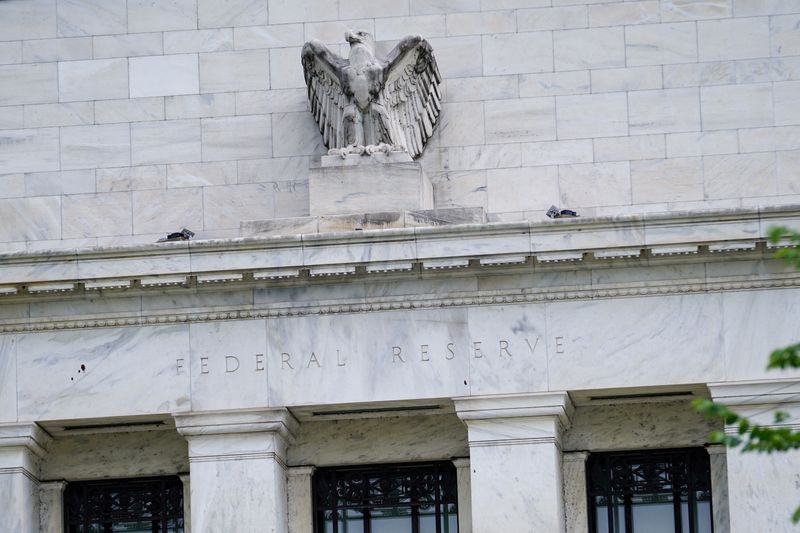By Michael S. Derby
(Reuters) - Federal Reserve efforts to overhaul a key emergency lending facility historically viewed with anxiety by banks are now being joined by potential congressional action.
On Friday, Democratic Senator Mark Warner of Virginia introduced legislation to overhaul the Fed's discount window, a long-running tool that provides fast, collateralized loans to deposit-taking banks.
The Fed is already working to make sure banks are ready and willing to use the discount window, either in times of stress or if they simply face an unexpected liquidity shortfall. Banks have long shunned it, fearing that using it will send a signal of distress to their peers.
That long-standing stigma stood out in March 2023 when several banks ran into trouble and spurred fears about the overall state of the banking system. While discount window usage briefly surged, the Fed was concerned enough to launch a temporary lending facility with very generous terms that proved popular.
Since then Fed officials have been seeking to make sure banks are prepared to use the discount window and have signaled some confidence their efforts are working. Warner's bill could bolster that.
"The failures of Silicon Valley Bank and Signature Bank (OTC:SBNY) last year highlighted the urgent need to reform the Federal Reserve's discount window for the 21st century economy, where bank runs can occur over hours, rather than days," Warner said in a statement. He said the bill will help surmount stigma issues and ensure the discount window can "meet the challenges of the digital age."
The bill would mandate all but the smallest banks test their discount window access and would require regulators to reflect banks' ability to use the facility when evaluating their liquidity.
The bill would compel the Fed to report on the stigma issue to Congress, addressing what further steps need to be taken to reduce banks' worries.
The discount window "has deficiencies that have led to severe stigma, increasing the risk of banking panics and deposit runs," former New York Fed President William Dudley said in Warner's statement announcing the bill. "This bill will provide a good basis for regulators to implement operational improvements and reduce frictions that hinder the effectiveness of (the) discount window."
Steven Kelly, associate director of research at the Yale Program on Financial Stability, said the bill "gives the Fed clearer direction from its congressional overseers on how to pursue these liquidity reforms."
"This bill does not read as something designed to pick a fight with the Fed," Kelly said, as "it seems mostly simpatico with what they've already signaled."
A recent New York Fed paper said eliminating stigma may prove impossible and the central bank may have to rely on ad-hoc responses to liquidity problems.
Earlier this month Fed Chair Jerome Powell called discount window reform "a big, big project."
"We know that the infrastructure is a little tired," Powell said, but while work moves forward the Fed has "not made a lot of progress."

Dallas Fed President Lorie Logan was more upbeat. Earlier this month she said more than 5,000 deposit-taking banks had done the paperwork needed to access the discount window, with banks having pledged $3 trillion in collateral for potential loans, up from $1 trillion last year.
Meanwhile, in a May interview, New York Fed President John Williams said the facility does the job when trouble strikes, its long-standing issues notwithstanding. When there's a "general market issue" it's clear banks will use it, and that's a positive for broader market stability, he said.